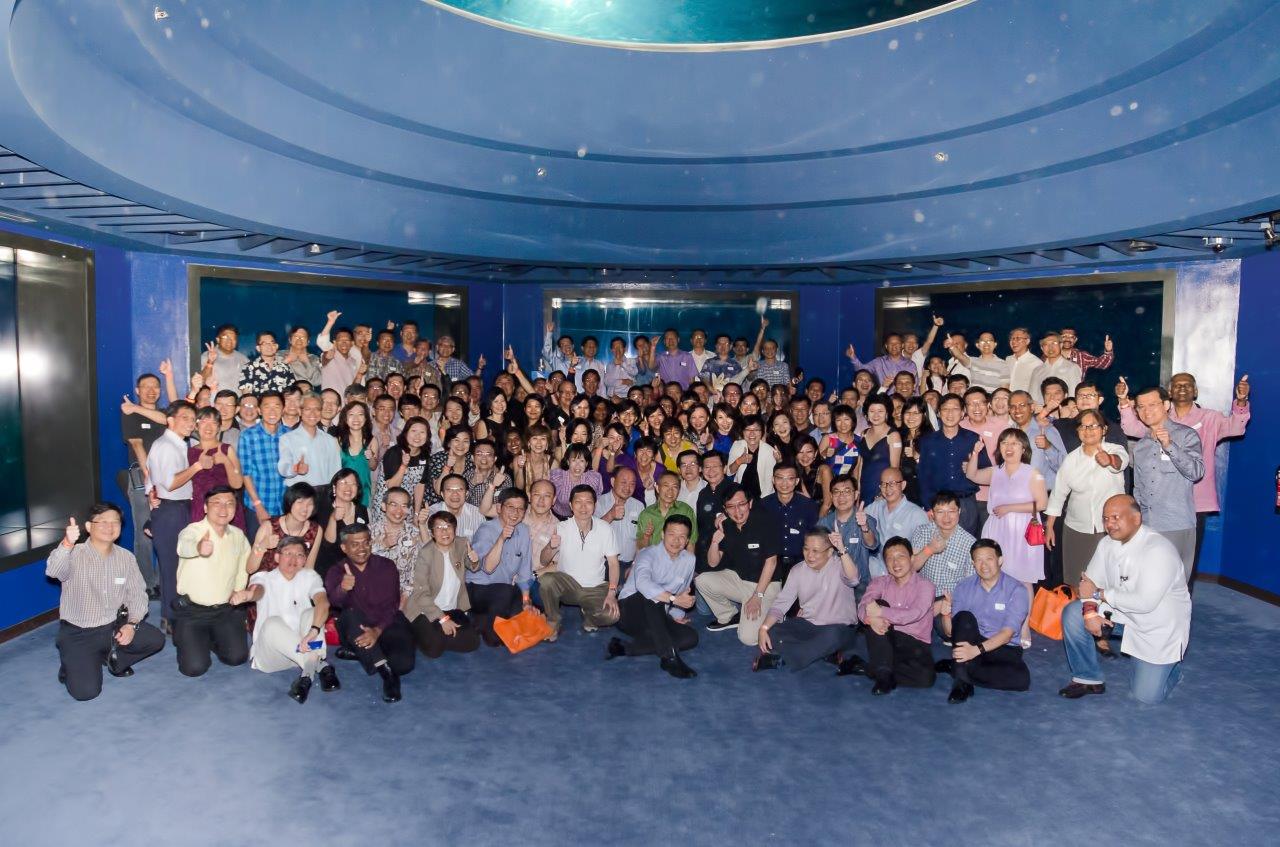Actors Help Medical Students and Residents Practice Their Skills

By Khor Ing Wei,
Dean’s Office
The doctor came into the clinic, where a distraught woman was waiting for him. The woman was overwhelmed by her many responsibilities, including the stress of caring for a son who had motor tics. The mother expressed her worry and frustration via an escalating level of emotion, to which the doctor responded with a long monologue about her son’s condition and possible treatments for it.
This seemingly routine doctor’s visit was actually not at all routine and, in fact, not even a real one. The doctor was a medical resident preparing for a postgraduate (Masters in Medicine) examination and the mother was a “simulated patient (SP)” who was acting the part. For the rest of the day, she would reprise her role for other residents in the course.
If SPs sound like a strange concept, given that there is no shortage of real patients, they actually serve a very important role in training medical students and residents in skills such as communication and conducting a physical examination.
For example, after the mock doctor’s visit, the course coordinators held a debrief session with the SP and the resident who was being evaluated. The SP gave candid and specific comments on the resident’s performance, saying that she thought he had given too much explanation and had not addressed all of her character’s concerns and questions. The teaching point in this case was to listen carefully to what the patient’s mother had to say. If the resident had listened more (instead of trying to get all of the facts about motor tics), he may have discovered that the mother was highly stressed for many reasons and that her stress could have partially caused her son’s motor tics.
SPs come from any walk of life, such as Mr Francis Leong, 70, who retired from an engineering career 18 years ago and found himself with time on his hands. He joined a singing group and found out about the SP programme at Tan Tock Seng General Hospital from his friends in the group. Later on, he joined the SP programme at NUS Medicine.
He values the programme because learning the scripts and scenarios helps him “gain memory benefits and stave off dementia.” He also feels that “SPs give students a chance to practice their skills” so they are better equipped when they interact with real patients, especially in difficult scenarios.
Mr Yeo Jun Yu, 33, is a part-time fitness trainer who found out about the programme through his mother, a staff nurse at NUH. His favourite part of being an SP is the acting, which he describes as “very interesting and fun.” He especially enjoys portraying very difficult patients. Although he has a certain amount of scope in portraying a part, he points out that the level of emotion is usually determined beforehand when the case writer meets with him.
“I have to present the same level of emotion for each student, to keep it fair,” says Mr Yeo.
Both Mr Leong and Mr Yeo joined the NUS Medicine SP programme when it started in 2012, when recruitment was more informal. Now, most SPs are recruited through the programme’s annual SP Day in May or June. Candidates go through an interview, during which they are evaluated on their motivation as well as ability to act and provide constructive feedback. Selected SPs undergo a basic skills course that lasts for a day and a half and provides them with tools to communicate their responses to students. SPs who perform well will be invited for further training, which includes the Master Interview Rating Scale (MIRS) and Physical Examination Training Associate (PETA) courses. PETA-trained SPs can give layperson feedback to students about their physical examination techniques.
Dr Nicola Ngiam directs the SP Programme at NUS Medicine, supported by three SP educators. These educators manage the use of SPs in undergraduate; postgraduate; and Nursing and Dentistry courses, respectively.
“When we first started the programme, we mainly used SPs for assessment needs,” says Dr Ngiam. “But, after a couple of years, we realised there was a lot more that SPs could offer.” In collaboration with the Eastern Virginia Medical School in the United States, she and her team trained the SPs in portraying emotions and communicating effectively. The SPs are now used in both teaching and assessment activities.
This means many opportunities for SPs to help train our medical students and stretch their acting legs. Mr Leong, for one, relishes every minute of it. “I don’t hold back – whether I’m supposed to act angry or sad, I give it my all,” he says, smiling broadly.
